New report reveals that AI in customer service often fails to meet expectations, with rising consumer concerns over data use and trust, highlighting the need for transparency, context-aware personalisation, and meaningful human-AI collaboration to drive lasting loyalty.
As businesses rush to integrate AI into customer service, the technology isn’t living up to its hype. While AI promises faster responses and smarter support, many consumers are finding the reality frustrating, leaving companies to wonder if their investments are paying off.
Nearly 1 in 5 consumers who have used AI for customer service saw no benefits from the experience. That’s a failure rate almost 4x higher than for AI use in general, as per the 2026 Consumer Experience Trends Report from Qualtrics.
As pressure grows on companies to demonstrate tangible returns on AI investments, the Qualtrics report reveals that efforts to scale service excellence with AI are falling short of expectations and that concerns about how customer data is being used are on the rise.
Consumers rank AI applications for customer service among the worst for convenience, time savings, and usefulness – only “building an AI assistant” scores lower.
Misuse of personal data is now consumers’ top concern when companies use AI to automate interactions – 53% of consumers share this fear, up 8 points over the past year. Half of consumers are concerned that companies’ AI use will prevent them from connecting with a human being, and 47% are worried about job losses.
“Too many companies are deploying AI to cut costs, not solve problems, and customers can tell the difference,” said Isabelle Zdatny, Head of Thought Leadership at Qualtrics XM Institute and the Author of the Report.
“AI should be used to build connections and enhance the human experience, with capable AI agents managing simple, transactional requests. Then, AI can aid human agents in solving complex customer problems with the relevant background details and suggested solutions.”
Customer Experience on the Rise, But Gains are Fragile
Despite AI’s initial shortcomings, global consumer experience improved across every industry measured in the report. Customers reported the strongest improvements in satisfaction, trust, and loyalty behaviours in industries where they can easily switch between brands, such as fast food or online retail.
Harder-to-switch industries like universities and public utilities improved their consumer experiences at a slower pace, which could make them more vulnerable to disruptors targeting complacent sectors.
| 2026 | YoY Difference | |
| Satisfaction | 79 % | +3.0 PTS |
| Trust | 76 % | +2.7 PTS |
| Recommend | 72 % | +2.7 PTS |
| Purchase more | 70 % | +2.6 PTS |
Beyond Price: Loyalty Comes from Experience
Price sensitivity is high for consumers amid economic uncertainty heightened by tariffs and inflation, but companies that choose to compete beyond just prices are rewarded with outsized gains.
While 46% of consumers choose companies for value, those who select brands for great customer service are more satisfied and have higher levels of trust compared with consumers who base their purchasing decisions on value, convenience, or familiarity.
“A race to the bottom on prices might win customers in the short term, but price is a temporary differentiator with fleeting impact,” said Zdatny. “Long-term customer relationships will be built on meaningful connections, not transactional interactions that won’t set an organisation apart when the economy shifts.”
| Why customers continue to do business with an organisation |
% of customers who choose to do business for this reason |
Satisfaction rating when customers choose to do business for this reason |
Trust rating when customers choose to do business for this reason |
| Good customer service | 29 % | 92 % | 89 % |
| Good product/service | 42 % | 90 % | 87 % |
| I’m comfortable with them | 37 % | 89 % | 86 % |
| Good value for money | 46 % | 87 % | 83 % |
| Convenient | 41 % | 83 % | 80 % |
| Special discount | 20 % | 79 % | 75 % |
| Too difficult to switch | 11 % | 71 % | 69 % |
| No other option available | 15 % | 64 % | 62 % |
| Other | 18 % | 63 % | 60 % |
Feedback Is Declining—Businesses Are Flying Blind
At a time when businesses most need insights, consumers are providing less feedback, with only 29% of customers communicating directly with organisations after bad experiences, down 7.5 points from 2021. Instead, 30% say nothing at all, up nine points since 2021.
Nearly half (47%) of bad customer experiences lead to decreased spending. This leaves business leaders in the dark when it comes to understanding changing consumer behaviours or reasons for churn, let alone addressing them.
The silence makes indirect feedback, through channels like social media or reviews, increasingly valuable for organisations to make up for the decline in direct responses. Successful businesses will connect these scattered signals to understand customer sentiment even when it’s not explicitly stated.
“Companies are flying blind while customers vote with their wallets,” according to Zdatny. “In today’s business environment, experience, operational, and behavioural data all need to come together to ensure leaders can take action to resolve systemic issues before losing customers to bad experiences.”
Personalisation Demands Trust, Not Just Data
Consumers increasingly want experiences tailored to their individual needs – 64% want to buy from companies that cater to their individual experiences, up 2.5 points year over year – but most don’t believe the benefits justify the privacy cost.
Only 39% of people trust companies to use personal data responsibly, and nearly two-thirds worry about the security of their personal data. Fears about fraud (33%) and hacking (23%) top their worries.
Consumers are most comfortable with companies using personal info to learn their habits, such as recommending a typical coffee order – 30% of consumers say they would be okay with this. Still, this is a smaller share than the 32% of consumers who are uncomfortable with all forms of personalisation.
The research identifies a clear path forward: transparency and control can rebuild trust. Nearly half (46%) of consumers would share more data with greater transparency about the data being collected, while 45% each would do so with better control over data usage or deletion.
The Path Forward: Context Over Collection
The report underscores that collecting more data isn’t always the answer.
Instead, companies should focus on understanding customer context and using insights to address real-time needs. Transparency and control over data usage are key to rebuilding trust and fostering lasting loyalty.
“Companies need to stop collecting everything for the sake of having all the data – don’t ask for more than you need,” said Zdatny.
“Understanding customer context wins out over building detailed profiles as it allows businesses to address needs based on current situations. Showing how their data improved their experience, paired with transparency and control, will build a foundation of trust that drives lasting loyalty.”
Based on a global study of over 20,000 consumers across 14 countries: Australia, Brazil, Canada, France, Germany, Japan, Mexico, Netherlands, New Zealand, Singapore, Sweden, UAE, UK, and US, the findings highlight that meaningful CX, not sheer data accumulation, will define the future of customer service.
ALSO READ: Success Becomes a Trap: How Brands Can Regain Product-Market Fit









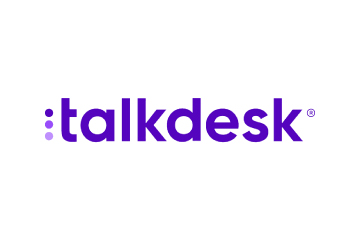

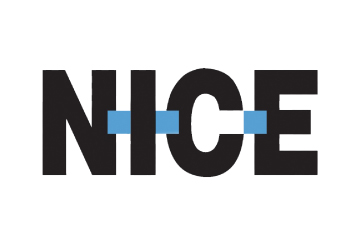


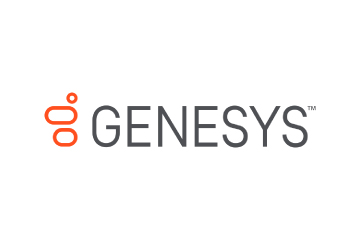




 Amplitude is a product analytics platform, enabling businesses to track visitors with the help of collaborative analytics. The platform leverages the capabilities of
Amplitude is a product analytics platform, enabling businesses to track visitors with the help of collaborative analytics. The platform leverages the capabilities of 

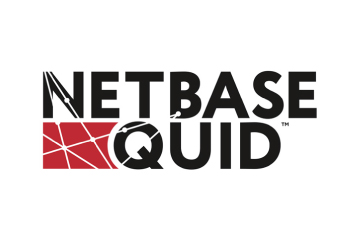


 Zoho Social, a part of Zoho’s suite of 50+ products, is a comprehensive social media management platform for businesses and agencies. The Zoho Social dashboard includes a robust set of features, such as Publishing Calendar, Bulk Scheduler, and Approval Management to offer businesses all the essential social media publishing tools. Its monitoring tools help enterprises track and respond to relevant social conversations.
Zoho Social, a part of Zoho’s suite of 50+ products, is a comprehensive social media management platform for businesses and agencies. The Zoho Social dashboard includes a robust set of features, such as Publishing Calendar, Bulk Scheduler, and Approval Management to offer businesses all the essential social media publishing tools. Its monitoring tools help enterprises track and respond to relevant social conversations.

 Microsoft Dynamics 365 represents a robust cloud-based CRM solution with features such as pipeline assessment, relationship analytics, and conversational intelligence. It utilises AI-powered insights to provide actionable intelligence via predictive analytics, lead scoring, sentiment analysis, etc. Currently, Microsoft operates in 190 countries and is made up of more than 220,000 employees worldwide.
Microsoft Dynamics 365 represents a robust cloud-based CRM solution with features such as pipeline assessment, relationship analytics, and conversational intelligence. It utilises AI-powered insights to provide actionable intelligence via predictive analytics, lead scoring, sentiment analysis, etc. Currently, Microsoft operates in 190 countries and is made up of more than 220,000 employees worldwide.

 HubSpot is an inbound marketing, sales, and customer service software provider, offering robust CRM and automation solutions. Some of its products include Marketing Hub, Sales Hub, Operations Hub, Content Hub, Commerce Hub, Marketing Analytics and Dashboard Software. Guided by its inbound methodology, HubSpot enables companies to prioritise innovation and customer success.
HubSpot is an inbound marketing, sales, and customer service software provider, offering robust CRM and automation solutions. Some of its products include Marketing Hub, Sales Hub, Operations Hub, Content Hub, Commerce Hub, Marketing Analytics and Dashboard Software. Guided by its inbound methodology, HubSpot enables companies to prioritise innovation and customer success.
 Monday.com is a project management software company, offering a cloud-based platform that enables businesses
Monday.com is a project management software company, offering a cloud-based platform that enables businesses  Headquartered in San Mateo, California, Freshworks is a global AI-powered business software provider. Its tech stack includes a scalable and comprehensive suite for IT, customer support, sales, and marketing teams, ensuring value for immediate business impact. Its product portfolio includes Customer Service Suite, Freshdesk, Freshchat, Freshcaller, Freshsuccess, and Freshservice. Freshservice for Business Teams has helped several global organisations to enhance their operational efficiency.
Headquartered in San Mateo, California, Freshworks is a global AI-powered business software provider. Its tech stack includes a scalable and comprehensive suite for IT, customer support, sales, and marketing teams, ensuring value for immediate business impact. Its product portfolio includes Customer Service Suite, Freshdesk, Freshchat, Freshcaller, Freshsuccess, and Freshservice. Freshservice for Business Teams has helped several global organisations to enhance their operational efficiency.
 Talkdesk offers an innovative AI-powered customer-centric tech stack to its global partners. The company provides generative AI integrations, delivering industry-specific solutions to its customers. Talkdesk CX Cloud and Industry Experience Clouds utilise modern machine learning and language models to enhance contact centre efficiency and client satisfaction.
Talkdesk offers an innovative AI-powered customer-centric tech stack to its global partners. The company provides generative AI integrations, delivering industry-specific solutions to its customers. Talkdesk CX Cloud and Industry Experience Clouds utilise modern machine learning and language models to enhance contact centre efficiency and client satisfaction.




 The company offers comprehensive cloud-based solutions, such as Microsoft Dynamics 365, Gaming Consoles, Microsoft Advertising, Copilot, among other things, to help organisations offer enhanced CX and ROI. Its generative-AI-powered speech and voice recognition solutions,such as Cortana and Azure Speech Services empowers developers to build intelligent applications.
The company offers comprehensive cloud-based solutions, such as Microsoft Dynamics 365, Gaming Consoles, Microsoft Advertising, Copilot, among other things, to help organisations offer enhanced CX and ROI. Its generative-AI-powered speech and voice recognition solutions,such as Cortana and Azure Speech Services empowers developers to build intelligent applications. IBM is a global hybrid cloud and AI-powered
IBM is a global hybrid cloud and AI-powered  Uniphore is an enterprise-class, AI-native company that was incubated in 2008. Its enterprise-class multimodal AI and data platform unifies all elements of voice, video, text and data by leveraging Generative AI, Knowledge AI, Emotion AI and workflow automation. Some of its products include U-Self Serve, U-Assist, U-Capture, and U-Analyze. Its Q for Sale is a conversational intelligence software that guides revenue teams with AI-powered insights, offering clarity on how to effectively keep prospects engaged.
Uniphore is an enterprise-class, AI-native company that was incubated in 2008. Its enterprise-class multimodal AI and data platform unifies all elements of voice, video, text and data by leveraging Generative AI, Knowledge AI, Emotion AI and workflow automation. Some of its products include U-Self Serve, U-Assist, U-Capture, and U-Analyze. Its Q for Sale is a conversational intelligence software that guides revenue teams with AI-powered insights, offering clarity on how to effectively keep prospects engaged. Google Cloud accelerates every organisation’s ability to digitally transform its business. Its enterprise-grade solutions leverage modern technology to solve the most criticial business problems
Google Cloud accelerates every organisation’s ability to digitally transform its business. Its enterprise-grade solutions leverage modern technology to solve the most criticial business problems  8×8 offers out-of-the-box contact centre solutions, assisting all-size businesses to efficiently meet customer needs and preferences. It offers custom CRM integrations support and integrates effortlessly with third-party CRMs like Salesforce, Microsoft Dynamics, Zendesk, and more. Offering global support in all time zones & development teams in 5 continents, its patented geo-routing solution ensures consistent voice quality.
8×8 offers out-of-the-box contact centre solutions, assisting all-size businesses to efficiently meet customer needs and preferences. It offers custom CRM integrations support and integrates effortlessly with third-party CRMs like Salesforce, Microsoft Dynamics, Zendesk, and more. Offering global support in all time zones & development teams in 5 continents, its patented geo-routing solution ensures consistent voice quality. Sprinklr is a comprehensive enterprise software company for all customer-focused functions. With advanced AI, Sprinklr’s unified customer experience management (Unified-CXM) platform lets organisations offer human experiences to every customer, every time, across any modern channel.
Sprinklr is a comprehensive enterprise software company for all customer-focused functions. With advanced AI, Sprinklr’s unified customer experience management (Unified-CXM) platform lets organisations offer human experiences to every customer, every time, across any modern channel.


 Upland offers a comprehensive suite of contact centre and customer service solutions with products including InGenius, Panviva, Rant & Rave, and RightAnswers. InGenius enables organisations to connect their existing phone system with CRM, further enhancing agent productivity. Panviva provides compliant and omnichannel capabilities for highly regulated industries. Whereas, Rant & Rave, and RightAnswers are its AI-powered solutions,
Upland offers a comprehensive suite of contact centre and customer service solutions with products including InGenius, Panviva, Rant & Rave, and RightAnswers. InGenius enables organisations to connect their existing phone system with CRM, further enhancing agent productivity. Panviva provides compliant and omnichannel capabilities for highly regulated industries. Whereas, Rant & Rave, and RightAnswers are its AI-powered solutions, 


 Hootsuite, headquartered in Vancouver, is a social media management platform that streamlines the process of managing multiple social media accounts. Some of its core offerings include social media content planning and publishing, audience engagement tools, analytics and social advertising. Its easy-to-integrate capabilities help marketing teams to schedule and publish social media posts efficiently.
Hootsuite, headquartered in Vancouver, is a social media management platform that streamlines the process of managing multiple social media accounts. Some of its core offerings include social media content planning and publishing, audience engagement tools, analytics and social advertising. Its easy-to-integrate capabilities help marketing teams to schedule and publish social media posts efficiently.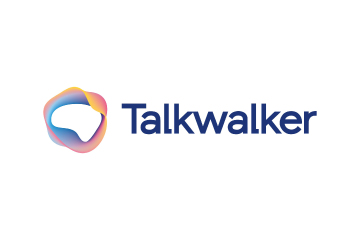

 Brandwatch enables businesses to build and scale the optimal strategy for their clients with intuitive, use-case-focused tools that are easy and quick to master. Bringing together consumer intelligence and social media management, the company helps its users react to the trends that matter, collaborate on data-driven content, shield the brand from threats and manage all the social media channels at scale.
Brandwatch enables businesses to build and scale the optimal strategy for their clients with intuitive, use-case-focused tools that are easy and quick to master. Bringing together consumer intelligence and social media management, the company helps its users react to the trends that matter, collaborate on data-driven content, shield the brand from threats and manage all the social media channels at scale.


 Adobe Experience Cloud offers a comprehensive set of applications, capabilities, and services specifically designed to address day-to-day requirement for personalised customer experiences at scale. Its platform helps play an essential role in managing different digital content or assets to improve customer happiness. Its easy-to-optimise content gives users appropriate marketing streams, ensuring product awareness.
Adobe Experience Cloud offers a comprehensive set of applications, capabilities, and services specifically designed to address day-to-day requirement for personalised customer experiences at scale. Its platform helps play an essential role in managing different digital content or assets to improve customer happiness. Its easy-to-optimise content gives users appropriate marketing streams, ensuring product awareness. Salesforce-owned Tableau is an AI-powered analytics and business intelligence platform, offering the breadth and depth of capabilities that serve the requirements of global enterprises in a seamless, integrated experience. Marketers can utilise generative AI models, AI-powered predictions, natural language querying, and recommendationsons.
Salesforce-owned Tableau is an AI-powered analytics and business intelligence platform, offering the breadth and depth of capabilities that serve the requirements of global enterprises in a seamless, integrated experience. Marketers can utilise generative AI models, AI-powered predictions, natural language querying, and recommendationsons. Contentsquare is a cloud-based digital experience analytics platform, helping brands track billions of digital interactions, and turn those digital
Contentsquare is a cloud-based digital experience analytics platform, helping brands track billions of digital interactions, and turn those digital 


 Zoho Corporation offers innovative and tailored software to help leaders grow their business. Zoho’s 55+ products aid sales and marketing, support and collaboration, finance, and recruitment requirements. Its customer analytics capabilities come with a conversational feature, Ask Zia. It enables users to ask questions and get insights in the form of reports and widgets in real-time.
Zoho Corporation offers innovative and tailored software to help leaders grow their business. Zoho’s 55+ products aid sales and marketing, support and collaboration, finance, and recruitment requirements. Its customer analytics capabilities come with a conversational feature, Ask Zia. It enables users to ask questions and get insights in the form of reports and widgets in real-time. Fullstory is a behavioural data platform, helping C-suite leaders make informed decisions by injecting digital behavioural data into its analytics stack. Its patented technology uncovers the power of quality behavioural data at scale, transforming every digital visit into actionable insights. Enterprises can increase funnel conversion and identify their highest-value customers effortlessly.
Fullstory is a behavioural data platform, helping C-suite leaders make informed decisions by injecting digital behavioural data into its analytics stack. Its patented technology uncovers the power of quality behavioural data at scale, transforming every digital visit into actionable insights. Enterprises can increase funnel conversion and identify their highest-value customers effortlessly.
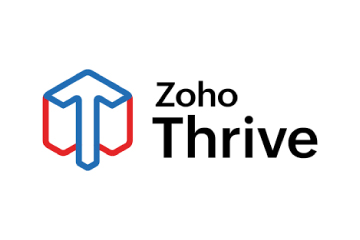
 Started in 2005 in a Sweden-based small town, Norrköping, Voyado offers a customer experience cloud platform that includes a customer loyalty management system. This platform helps businesses design and implement customer loyalty programs, track customer
Started in 2005 in a Sweden-based small town, Norrköping, Voyado offers a customer experience cloud platform that includes a customer loyalty management system. This platform helps businesses design and implement customer loyalty programs, track customer 



 TapMango provides a comprehensive, customisable, flexible and feature-rich customer loyalty program. The loyalty tools include an integrated suite of customised consumer-facing technology, easy-to-use merchant tools, and automation algorithms, all aimed at enhancing customer experience. Adaptable to any industry, TapMango’s platform helps merchants compete with larger chains, converting customer one-time purchases into profitable spending habits.
TapMango provides a comprehensive, customisable, flexible and feature-rich customer loyalty program. The loyalty tools include an integrated suite of customised consumer-facing technology, easy-to-use merchant tools, and automation algorithms, all aimed at enhancing customer experience. Adaptable to any industry, TapMango’s platform helps merchants compete with larger chains, converting customer one-time purchases into profitable spending habits.

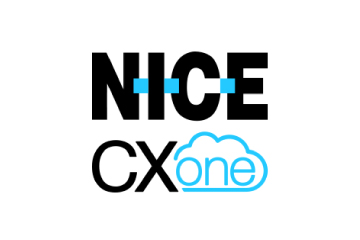




 Adobe Experience Cloud offers a comprehensive set of applications, capabilities, and services specifically designed to address day-to-day requirements for personalised customer experiences at scale. Its innovative platform has played an essential role in managing different digital content or assets, to improve customer happiness or satisfaction. Some of its products include Adobe Gen Studio, Experience Manager Sites, Real-time CDP, and Marketo Engage.
Adobe Experience Cloud offers a comprehensive set of applications, capabilities, and services specifically designed to address day-to-day requirements for personalised customer experiences at scale. Its innovative platform has played an essential role in managing different digital content or assets, to improve customer happiness or satisfaction. Some of its products include Adobe Gen Studio, Experience Manager Sites, Real-time CDP, and Marketo Engage.

